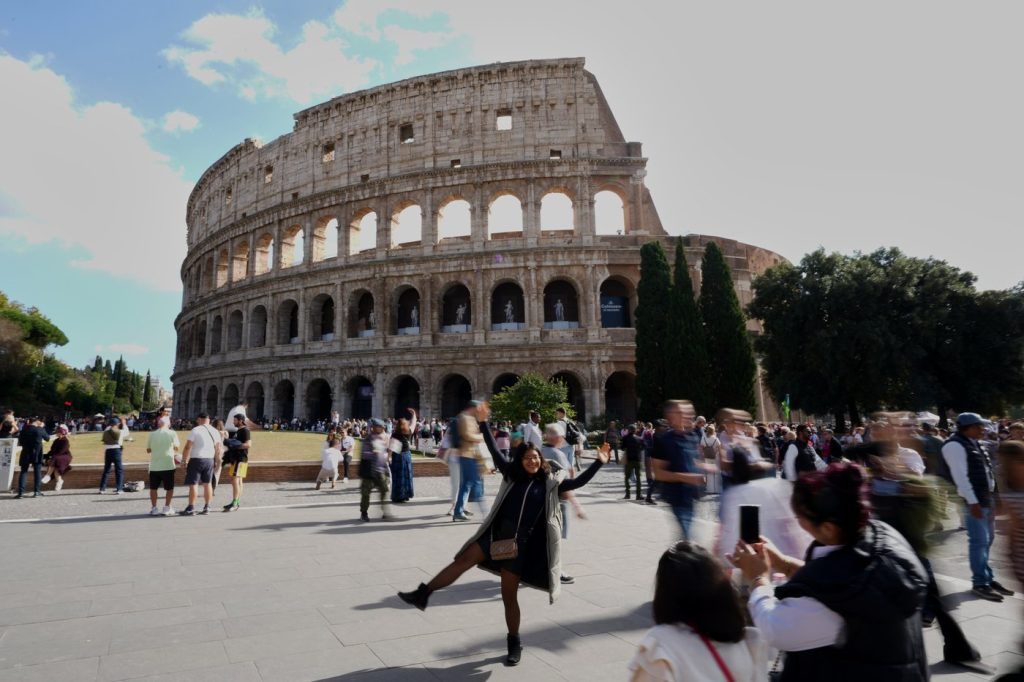Top Stories
Colosseum Director Rejects Rave Rumors, Outlines Concert Vision

The newly appointed director of the Colosseum, Simone Quilici, has clarified that the iconic amphitheater will not host electronic dance music events during his tenure. Quilici, who took over leadership of the Archaeological Park of the Colosseum on October 20, 2023, addressed the issue following widespread speculation on social media about potential “massive raves” at the historic site.
In an interview with an Italian newspaper, Quilici explained that while he aims to reintroduce concerts at the nearly 2,000-year-old structure, these events will respect its historical and cultural significance. “The music must be carefully controlled,” he stated, emphasizing the need for a calm atmosphere that honors the Colosseum as a “sacred space.” The amphitheater holds deep cultural value for many Romans and serves as a site for the Via Crucis procession during Easter, traditionally led by the pope.
Concerts could feature artists like Sting, and genres such as acoustic or jazz music are being considered. Quilici suggested that poetry readings, dance performances, and theater productions could also take place, once the existing small stage is expanded. He highlighted the potential for historical reenactments rooted in academic research, distancing these presentations from the less professional portrayals of ancient Romans seen by tourists today.
Concerts and performances in the Colosseum are expected to commence within two years. Historically, the venue has hosted a limited number of concerts, including performances by Ray Charles in 2002 and Andrea Bocelli in 2009, all of which were special events with strict audience limitations.
Quilici also expressed his ambition to encourage tourists to explore beyond the Colosseum. In 2022, the site attracted nearly 9 million visitors, a significant increase from 7 million the previous year, largely due to the ongoing Vatican Jubilee. Despite being a premier attraction, he noted that many visitors do not venture to nearby historical sites such as the Roman Forum and Palatine Hill.
“Last year, tourists in Rome didn’t stay just two and a half days; their visits increased to four days,” Quilici remarked. He suggested that the Colosseum could serve as a starting point for deeper exploration of the city’s rich history.
The director also pointed out the underappreciated sites close to the Colosseum, including the Circus Maximus and the Appian Way, both of which offer unique glimpses into ancient Roman life. He aims to improve access to these locations, promoting a more integrated experience for visitors and reducing the overwhelming crowds at the Colosseum.
Quilici’s vision encompasses a collaborative effort among various administrative bodies to enhance visitor management. He proposed simple yet effective measures, such as limiting traffic around historical sites, to restore the vibrancy of Rome’s cultural heart without incurring significant costs.
As the Colosseum prepares for its future events and initiatives, Quilici’s commitment to preserving its legacy while enriching the cultural landscape of Rome is clear. The director’s focus on careful planning and respect for the site’s significance could redefine how this ancient venue interacts with contemporary culture and tourism.
-

 Education3 months ago
Education3 months agoBrandon University’s Failed $5 Million Project Sparks Oversight Review
-

 Science4 months ago
Science4 months agoMicrosoft Confirms U.S. Law Overrules Canadian Data Sovereignty
-

 Lifestyle3 months ago
Lifestyle3 months agoWinnipeg Celebrates Culinary Creativity During Le Burger Week 2025
-

 Health4 months ago
Health4 months agoMontreal’s Groupe Marcelle Leads Canadian Cosmetic Industry Growth
-

 Science4 months ago
Science4 months agoTech Innovator Amandipp Singh Transforms Hiring for Disabled
-

 Technology4 months ago
Technology4 months agoDragon Ball: Sparking! Zero Launching on Switch and Switch 2 This November
-

 Education4 months ago
Education4 months agoRed River College Launches New Programs to Address Industry Needs
-

 Technology4 months ago
Technology4 months agoGoogle Pixel 10 Pro Fold Specs Unveiled Ahead of Launch
-

 Business3 months ago
Business3 months agoRocket Lab Reports Strong Q2 2025 Revenue Growth and Future Plans
-

 Technology2 months ago
Technology2 months agoDiscord Faces Serious Security Breach Affecting Millions
-

 Education4 months ago
Education4 months agoAlberta Teachers’ Strike: Potential Impacts on Students and Families
-

 Science4 months ago
Science4 months agoChina’s Wukong Spacesuit Sets New Standard for AI in Space
-

 Education3 months ago
Education3 months agoNew SĆIȺNEW̱ SṮEȽIṮḴEȽ Elementary Opens in Langford for 2025/2026 Year
-

 Technology4 months ago
Technology4 months agoWorld of Warcraft Players Buzz Over 19-Quest Bee Challenge
-

 Business4 months ago
Business4 months agoNew Estimates Reveal ChatGPT-5 Energy Use Could Soar
-

 Business4 months ago
Business4 months agoDawson City Residents Rally Around Buy Canadian Movement
-

 Business4 months ago
Business4 months agoBNA Brewing to Open New Bowling Alley in Downtown Penticton
-

 Technology2 months ago
Technology2 months agoHuawei MatePad 12X Redefines Tablet Experience for Professionals
-

 Technology4 months ago
Technology4 months agoFuture Entertainment Launches DDoD with Gameplay Trailer Showcase
-

 Technology4 months ago
Technology4 months agoGlobal Launch of Ragnarok M: Classic Set for September 3, 2025
-

 Technology4 months ago
Technology4 months agoInnovative 140W GaN Travel Adapter Combines Power and Convenience
-

 Top Stories3 months ago
Top Stories3 months agoBlue Jays Shift José Berríos to Bullpen Ahead of Playoffs
-

 Science4 months ago
Science4 months agoXi Labs Innovates with New AI Operating System Set for 2025 Launch
-

 Technology4 months ago
Technology4 months agoNew IDR01 Smart Ring Offers Advanced Sports Tracking for $169










